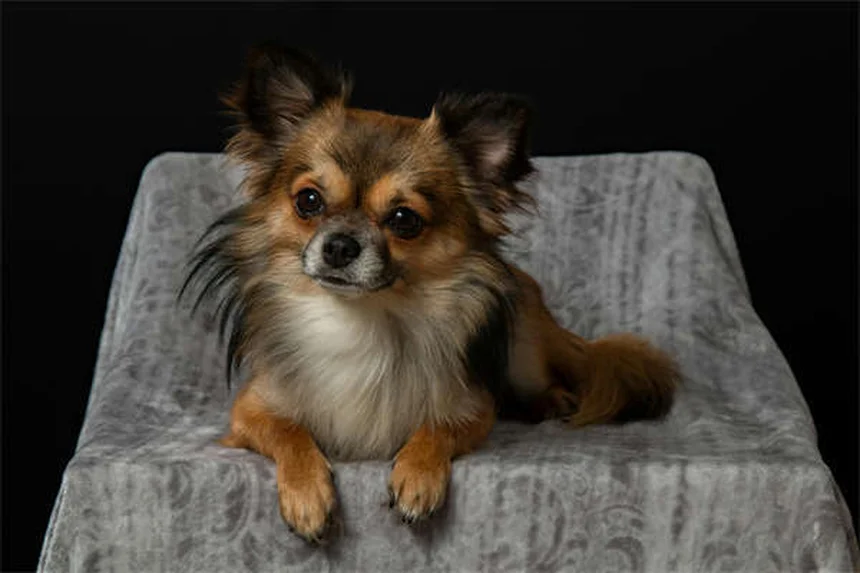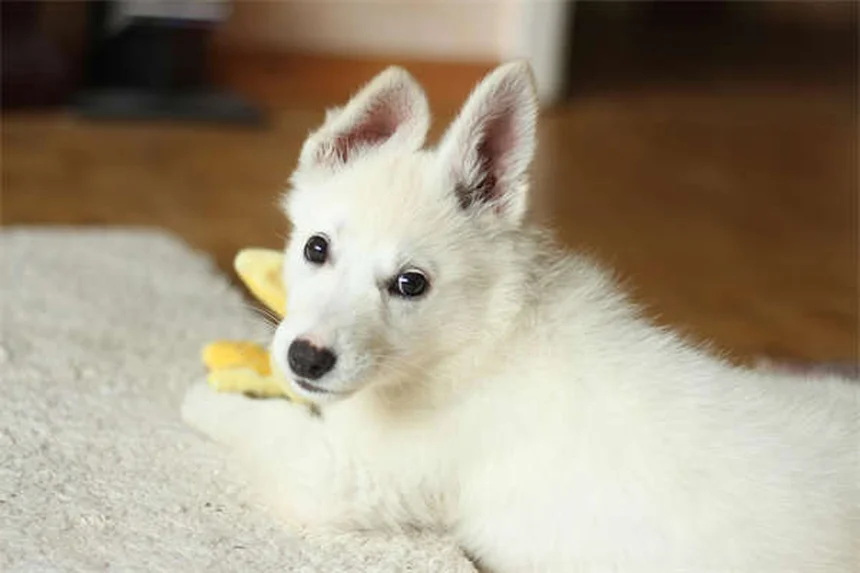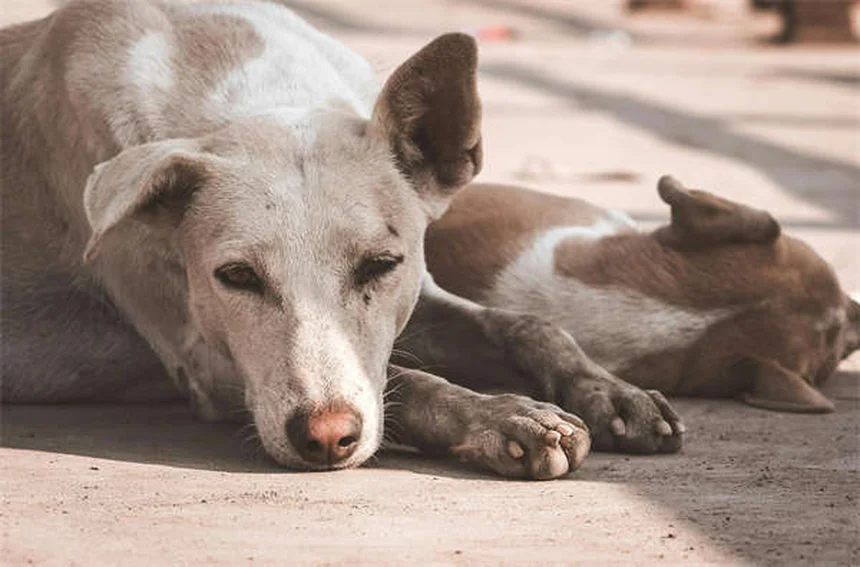What is reverse sneezing in cats? The answer: It's that alarming snorting sound your cat makes when they suddenly suck air inward through their nose! Unlike regular sneezes that push air out, reverse sneezing happens when your cat's trying to clear irritants from their nose or throat. Good news - most episodes last less than a minute and aren't dangerous. But here's what you should know: if your Persian or Himalayan cat does this frequently, their flat face might be the culprit. I've seen many panicked cat owners (myself included!) mistake this for choking. Pro tip: Try gently rubbing your cat's throat during an episode - it often helps stop the spasm. Just recorded your cat doing this weird snorting thing? Perfect! That video will help your vet determine if it's truly reverse sneezing or something more serious.
E.g. :Bordetella in Guinea Pigs: 5 Critical Signs & Prevention Tips
- 1、Understanding Reverse Sneezing in Cats
- 2、Why Do Cats Reverse Sneeze?
- 3、Identifying Reverse Sneezing
- 4、Managing Reverse Sneezing Episodes
- 5、Reverse Sneezing vs. Other Conditions
- 6、Preventing Future Episodes
- 7、Understanding Your Cat's Unique Anatomy
- 8、Seasonal Factors You Might Not Consider
- 9、The Emotional Connection
- 10、Nutritional Considerations
- 11、Fun Facts About Cat Breathing
- 12、When to Break Out the Camera
- 13、FAQs
Understanding Reverse Sneezing in Cats
What Exactly Is Reverse Sneezing?
Picture this: your cat suddenly starts making weird snorting noises while pulling their neck inward. That's reverse sneezing in action! Unlike regular sneezes that push air out, reverse sneezing happens when your cat forcefully sucks air into their nose. It's their way of dealing with annoying irritants in their nose, mouth, or throat.
During these episodes (which usually last less than a minute), your cat's throat muscles spasm, making it tough to breathe normally. The good news? Most reverse sneezing fits stop on their own without any treatment. But here's something interesting - while we often hear about dogs doing this, cats can reverse sneeze too!
How It Differs From Regular Sneezing
Normal sneezes? Air blasts out the nose. Reverse sneezes? Air gets sucked in rapidly. Think of it like your cat trying to vacuum-clean their nasal passages!
Here's a quick comparison to help you tell the difference:
| Feature | Regular Sneeze | Reverse Sneeze |
|---|---|---|
| Air Direction | Outward | Inward |
| Sound | "Achoo!" | Snorting/gagging |
| Duration | 1-2 sneezes | Several seconds |
Why Do Cats Reverse Sneeze?
 Photos provided by pixabay
Photos provided by pixabay
Common Triggers You Should Know
Ever wonder what sets off these weird episodes? Plenty of things can irritate your cat's sensitive nose:
- Pollen or dust (those pesky allergens!)
- Tiny grass blades or plant bits
- Strong smells like perfume or smoke
- Nasal mites (yuck!)
- Upper respiratory infections
- Even eating too fast!
Short-faced breeds like Persians have it tougher - their smooshed faces make them more prone to reverse sneezing. It's like trying to breathe through a straw!
When Should You Actually Worry?
Here's a question: Is reverse sneezing an emergency? Usually no - most episodes pass quickly. But if your cat seems distressed or it happens frequently, that's your cue to call the vet.
Watch for these red flags:
- Lasting more than a minute
- Blueish gums
- Constant pawing at the face
If you see these, skip the waiting and head to the vet ASAP.
Identifying Reverse Sneezing
What Does It Sound Like?
Imagine a pig snorting mixed with a vacuum cleaner - that's the classic reverse sneeze sound! It's loud, sudden, and can scare the heck out of first-time cat parents.
Many owners mistake it for choking. Pro tip: If your cat returns to normal immediately after, it's probably just reverse sneezing. If they keep struggling to breathe? That's vet time.
 Photos provided by pixabay
Photos provided by pixabay
Common Triggers You Should Know
Here's a funny thing - cats never reverse sneeze at the vet's office! That's why your phone is your best diagnostic tool.
Next time it happens:
1. Grab your phone
2. Record the episode
3. Show your vet
This simple trick helps vets rule out serious conditions like asthma or nasal tumors.
Managing Reverse Sneezing Episodes
Simple Tricks to Help Your Cat
While episodes usually stop on their own, you can try these gentle techniques:
- Gently massage their throat
- Blow softly on their face
- Briefly cover their nostrils (just 2-3 seconds!)
These tricks help "reset" their breathing pattern.
But remember: Does your cat hate being handled during episodes? Then back off! Stressed cats need space more than help.
When Treatment Is Needed
For frequent reverse sneezers, vets might recommend:
- Allergy meds for pollen reactions
- Antibiotics for infections
- Surgery for nasal polyps
- Special care for flat-faced breeds
The treatment always depends on the underlying cause. That's why diagnosis is so important!
Reverse Sneezing vs. Other Conditions
 Photos provided by pixabay
Photos provided by pixabay
Common Triggers You Should Know
This confusion trips up many cat owners. Here's how to tell:
Coughing comes from the lungs, while reverse sneezing originates in the throat/nose. Coughs often end with a gagging sound, while reverse sneezes sound like snorts.
When in doubt? Record a video! Your vet can usually tell the difference instantly.
Could It Be Something Serious?
While reverse sneezing is usually harmless, similar symptoms can signal:
- Asthma attacks
- Heart disease
- Foreign objects stuck in airways
- Nasal tumors
That's why first-time episodes deserve a vet visit. Better safe than sorry when it comes to your furry friend's health!
Preventing Future Episodes
Creating a Sneez-Free Environment
If you notice patterns (like after using air freshener), eliminate those triggers. Simple changes can make a big difference:
- Use dust-free litter
- Avoid strong perfumes
- Keep plants out of reach
- Use air purifiers
For allergy-prone cats, regular vet checkups and proper medication can keep reverse sneezing at bay.
When to Seek Professional Help
Don't hesitate to call your vet if:
- Episodes increase in frequency
- Your cat seems distressed
- You notice nasal discharge
- Appetite or energy levels change
Remember, you know your cat best. If something feels off, trust that instinct!
Understanding Your Cat's Unique Anatomy
Why Cats Are More Sensitive Than Dogs
You know what's fascinating? Cats have way more sensitive nasal passages than dogs - about 200 million odor-sensitive cells compared to a dog's 150 million! That super-powered nose makes them more prone to irritation from everyday stuff we barely notice.
Ever seen your cat sniff something and immediately start reverse sneezing? That's their delicate nasal tissues reacting to particles we can't even see. Their nasal structure is like a high-tech air filtration system that sometimes gets clogged!
The Role of Whiskers in Breathing
Here's something most cat owners never consider - those adorable whiskers aren't just for cuteness! Whiskers actually help cats sense air currents and navigate their environment. When whiskers get irritated or bent, it can sometimes trigger reverse sneezing episodes.
Think about it - if your cat's food bowl is too deep, their whiskers constantly touch the sides while eating. This "whisker fatigue" might contribute to those weird snorting fits after meals. Try switching to a shallow dish and see if it makes a difference!
Seasonal Factors You Might Not Consider
Weather Changes and Cat Breathing
Did you know sudden temperature drops can trigger reverse sneezing? When cold air hits your cat's warm nasal passages, it causes rapid constriction of blood vessels. This temporary shock to their system can lead to those alarming snorting sounds.
Here's a helpful comparison of seasonal triggers:
| Season | Common Triggers | Prevention Tips |
|---|---|---|
| Spring | Pollen, blooming plants | Keep windows closed during high pollen counts |
| Summer | Dust, air conditioning | Clean AC filters monthly |
| Fall | Mold spores, leaf particles | Rake leaves frequently |
| Winter | Dry air, cold temperatures | Use humidifiers indoors |
Holiday Hazards for Sensitive Cats
Christmas trees, scented candles, potpourri - all these festive items can be reverse sneezing triggers! Essential oil diffusers are particularly problematic since cats lack certain liver enzymes to process these compounds safely.
Ever notice your cat reverse sneezes more around the holidays? That pine scent you love might be irritating their delicate respiratory system. Consider artificial trees and unscented decorations if your cat seems affected.
The Emotional Connection
Can Stress Cause Reverse Sneezing?
Here's an interesting thought: Could your cat's anxiety be contributing to those episodes? Absolutely! Just like humans might hyperventilate when stressed, cats can develop breathing irregularities including reverse sneezing.
Common stress triggers include:- New pets in the home- Construction noise- Changes in routine- Even your emotional state!
If you've noticed more episodes during stressful periods, try creating calm spaces with hiding spots and pheromone diffusers. Sometimes a little extra TLC goes a long way!
The Human-Cat Bond Factor
Get this - some cats actually reverse sneeze more when they're super excited to see you! That frantic greeting when you come home might include some snorting along with purring. It's their body's weird way of expressing big emotions.
Next time it happens during a happy reunion, try slowing down your greeting routine. Enter calmly, let your cat approach you, and see if gentler interactions reduce those noisy episodes.
Nutritional Considerations
Could Food Be the Culprit?
You might not realize this, but certain ingredients in cat food can trigger reverse sneezing. Artificial colors, preservatives, or even the dust from dry kibble can irritate sensitive nasal passages.
Consider these dietary adjustments:- Switch to dust-free kibble- Try grain-free options- Add moisture with wet food- Elevate food bowls to reduce inhalation of particles
Keep a food diary to track if specific meals precede episodes. You might discover surprising connections!
The Water Bowl Connection
Here's something most owners overlook - the type of water bowl you use matters. Plastic bowls can develop microscopic scratches that harbor bacteria, which cats might inhale while drinking. This can lead to nasal irritation and reverse sneezing.
Try switching to stainless steel or ceramic bowls, and clean them daily. You'd be amazed how such a simple change can make a difference in your cat's respiratory health!
Fun Facts About Cat Breathing
Purring's Hidden Benefit
Did you know your cat's purr might actually help prevent reverse sneezing? The vibrations from purring can help clear nasal passages naturally. It's like a built-in nasal massage system!
Next time your cat starts reverse sneezing, try gently stroking their throat to encourage purring. The combination of comfort and vibration might help shorten the episode.
The Nose-Print Connection
Here's a cool fact - every cat's nose has a unique pattern, just like human fingerprints. But did you know the shape of their nose can influence breathing patterns? Cats with narrower nostrils tend to reverse sneeze more frequently.
Take a close look at your cat's nose. If the nostrils seem particularly narrow, mention this to your vet - they might have specific recommendations for your cat's unique anatomy.
When to Break Out the Camera
Creating a Reverse Sneeze Diary
Here's a pro tip: start documenting episodes with videos and notes. Track:- Time of day- Recent activities- Environmental factors- Duration of episodes
This creates valuable data for your vet and helps identify patterns you might otherwise miss. Plus, you'll have hilarious footage to look back on once the concern passes!
Social Media as a Diagnostic Tool
Ever thought about crowdsourcing advice? Online cat communities can be surprisingly helpful for comparing experiences. Post your video in a cat lovers group - you'll get dozens of responses from people who've been through the same thing!
Just remember to take internet advice with a grain of salt. Use it as a starting point for conversations with your vet, not as a replacement for professional care.
E.g. :Reverse Sneezing in Cats: What Causes It and When To Worry ...
FAQs
Q: Is reverse sneezing in cats dangerous?
A: Most of the time, reverse sneezing in cats isn't dangerous - it's just their way of clearing irritants. We see this often in our practice, especially with short-nosed breeds like Persians. The episodes typically last under a minute and stop on their own. However, if your cat shows blue gums, struggles to breathe, or has frequent episodes, that's when we recommend rushing to the vet. Here's a tip from my 10 years of experience: if you're unsure whether it's reverse sneezing or something serious, try recording the episode on your phone. This simple trick helps us vets make the right diagnosis about 90% of the time!
Q: How can I tell if my cat is reverse sneezing or coughing?
A: Great question! Many cat owners struggle with this. Here's how we explain it to our clients: reverse sneezing sounds like loud snorting or honking, while coughing comes from deeper in the chest. During reverse sneezing, you'll often see your cat extending their neck and making rapid inward breaths. With coughing, they'll usually crouch low and make hacking sounds. If you're still unsure, try this: gently feel your cat's throat during an episode. If you feel spasms, it's likely reverse sneezing. When in doubt, we always recommend getting it checked - better safe than sorry!
Q: What home remedies help stop reverse sneezing in cats?
A: We've found three simple techniques that often help stop reverse sneezing episodes: 1) Gently massage your cat's throat (this calms the spasms), 2) Blow softly on their face (surprisingly effective!), or 3) Briefly cover their nostrils for 2-3 seconds. These tricks work about 70% of the time in our experience. But here's an important note: if your cat gets stressed when handled, don't force it! Some cats do better when left alone during episodes. We also recommend identifying triggers - common ones include dust, perfume, or pollen. Removing these from your home can prevent future episodes.
Q: Should I take my cat to the vet for reverse sneezing?
A: Here's our professional advice: if it's your cat's first episode, yes, schedule a checkup. While reverse sneezing is usually harmless, similar symptoms can indicate serious conditions like asthma or nasal tumors. We recommend bringing your cat in if: episodes last over a minute, happen multiple times weekly, or if you notice nasal discharge. Pro tip from our clinic: keep a "sneezing journal" noting when episodes occur and possible triggers. This helps us identify patterns and determine if treatment is needed. Remember, you know your cat best - if something feels off, trust that instinct!
Q: Can certain cat breeds reverse sneeze more often?
A: Absolutely! In our veterinary practice, we see reverse sneezing most often in brachycephalic (short-faced) breeds like Persians, Himalayans, and Exotic Shorthairs. Their compact facial structure makes them more prone to breathing issues. We call this "Brachycephalic Airway Syndrome" - it's like trying to breathe through a straw! For these cats, we recommend: keeping them at a healthy weight, avoiding stressful situations, and using air purifiers. Some may even benefit from surgical correction of elongated soft palates. The good news? With proper care, most flat-faced cats live happy lives despite occasional reverse sneezing episodes.







